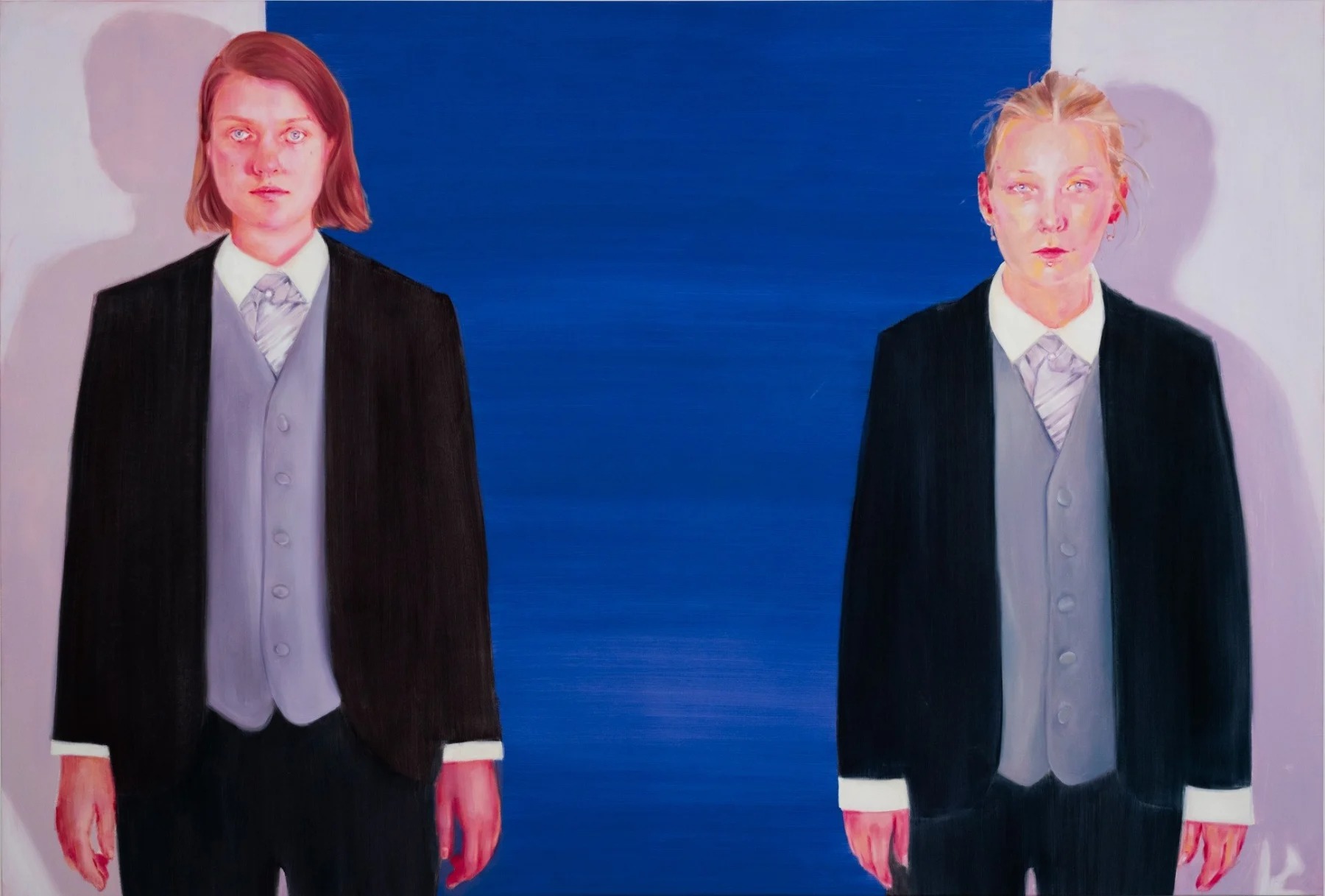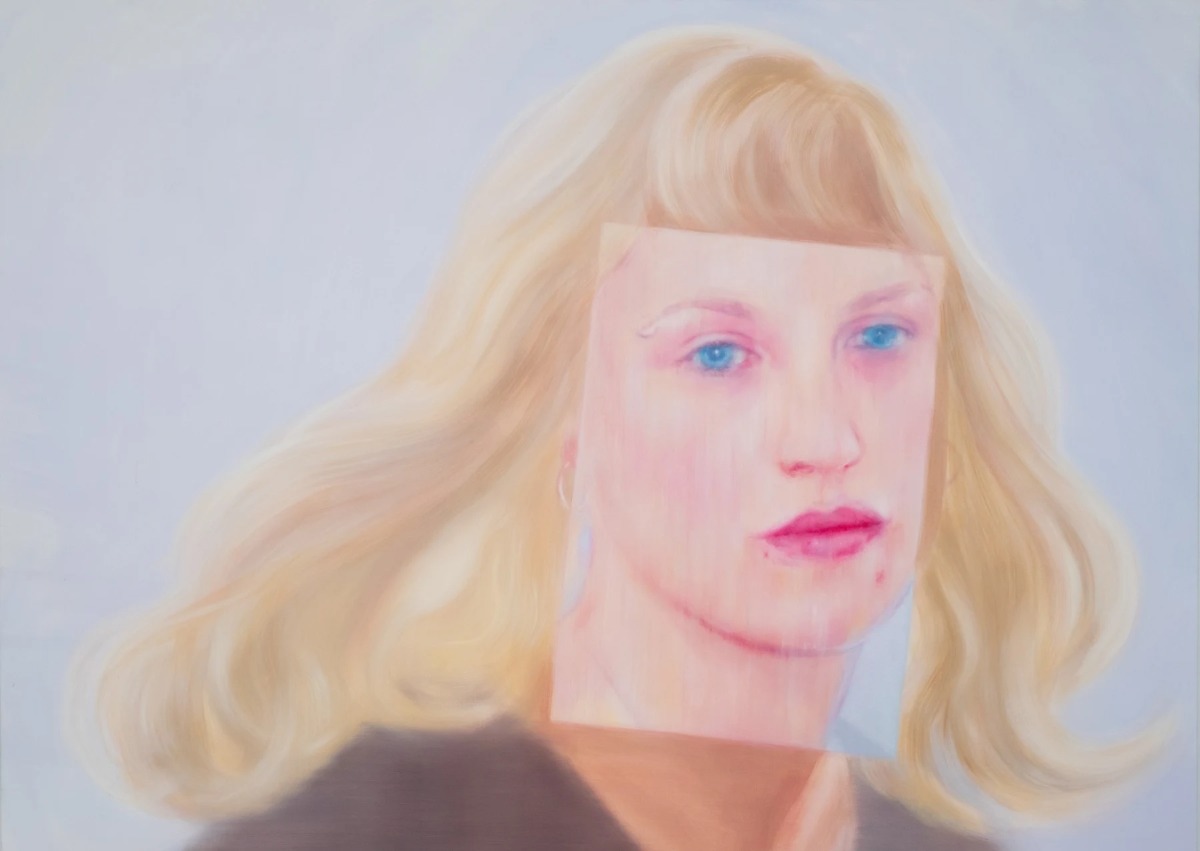
What to see in the Baltics
Must-see art exhibitions in May-June, 2024
For the third time this year, we present an overview of what, in our opinion, deserves attention, providing you with a selection of exhibitions and art events in the three Baltic countries. May-June this year is a hot season for art lovers, even in terms of content – the MO Museum in Vilnius continues its extensive exhibition 'We Don’t Do This. Intimacy, Norms, and Fantasies in Baltic Art,' which we announced last time. A large exposition titled 'In the Name of Desire, investigation of sexuality and the phenomenon of desire' has just opened at the Latvian National Museum of Art. The Estonian KUMU is also keeping up in terms of 'temperature.' However, this is not the only 'nerve' of the current art scene. What else occupies the minds of curators, gallery owners, and, first and foremost, artists?
ESTONIA, Tallinn
Kumu Art Museum
Ado Vabbe. Composition with Four Figures. 1912. Indian ink and watercolour. Art museum of Estonia
Guardians of Morality and Women of Passion: The Image of Sex Work in Estonian Art in the First Half of the 20th Century
Until 25 August
Perceptions of sex work have always been closely linked to social and personal moral standards. This exhibition explores how Estonian artists have portrayed sex work, how their works reflect the attitudes of society, and whether these representations may have contributed to shaping these attitudes. The focus is on the art of the 1920s and 1930s: this period marked a peak in the popularity of this subject among Estonian artists not matched before or since. The curator Magdaleena Maasik about the exhibition: “In Estonian art, as elsewhere, the theme is mainly represented through female sex workers. They appear as menacing vampires, desirable femme fatales, grotesque figures reeking of disease and death and suffering victims. Alongside sex workers, different types of clients, pimps, brothel-keepers and “moral guardians” stand out in the artworks, embodying the often hypocritical attitude of the society of the time towards sex work and sex workers”. The exhibition features over 50 works, mostly prints, drawings and watercolours. Works by over 20 artists are represented: Eduard Wiiralt, Gori, Natalie Mei, Ado Vabbe, Voldemar Kangro-Pool, Jenny Uttar, Aino Bach, Aleksander Promet, Erik Obermann, Oskar Kallis and others.
Jevgeni Zolotko. 2024. Photo: Gabriela Urm
Jevgeni Zolotko: The Secret of Adam
31 May – 5 January
Jevgeni Zolotko (b. 1983) is one of the most original Estonian contemporary artists. His solo exhibition “The Secret of Adam” showcases the artist’s recent works, including some brand new works created specifically for the exhibition. Zolotko is an artist whose work centres on the relationship between the verbal and the material. In his site specific installations Zolotko highlights the universal traits of human nature, intergenerational sensitivity passed on through culture and religion and suppressed subconscious. The artist digs deep into the past preceding our collective consciousness.
Fotografiska
From the series ME, 2020 © Rinko Kawauchi, Courtesy of Christophe Guye Galerie
Rinko Kawauchi. a faraway shining star, twinkling in hand
24 May – 1 September
Rinko Kawauchi is one of the most established artists in Japan and known worldwide for her dreamy, poetic and unique imagery. The new exhibition "a faraway shining star, twinkling in hand" features artist’s two most recent series, M/E and An interlinking. These works include everything from photographs to video art, light boxes and photo sculptures.
The M/E series is a tribute to “Mother Earth”, with photos of grand natural phenomena from Kawauchi’s trip to Iceland in 2019. She planned to return to the country to finish the series but was forced to remain in Japan when the COVID-19 pandemic struck. This led to completing the second part of the series with photos from her everyday life and from winter in Hokkaido, Japan. In the ongoing An interlinking series, Kawauchi has depicted her everyday life for 20 years, often with her daughter as her subject.
Kai Art Centre
Tuomas A. Laitinen 'A Proposal for an Octopus #5' (2019). Hand-blown glass. Photo: Hedi Jaansoo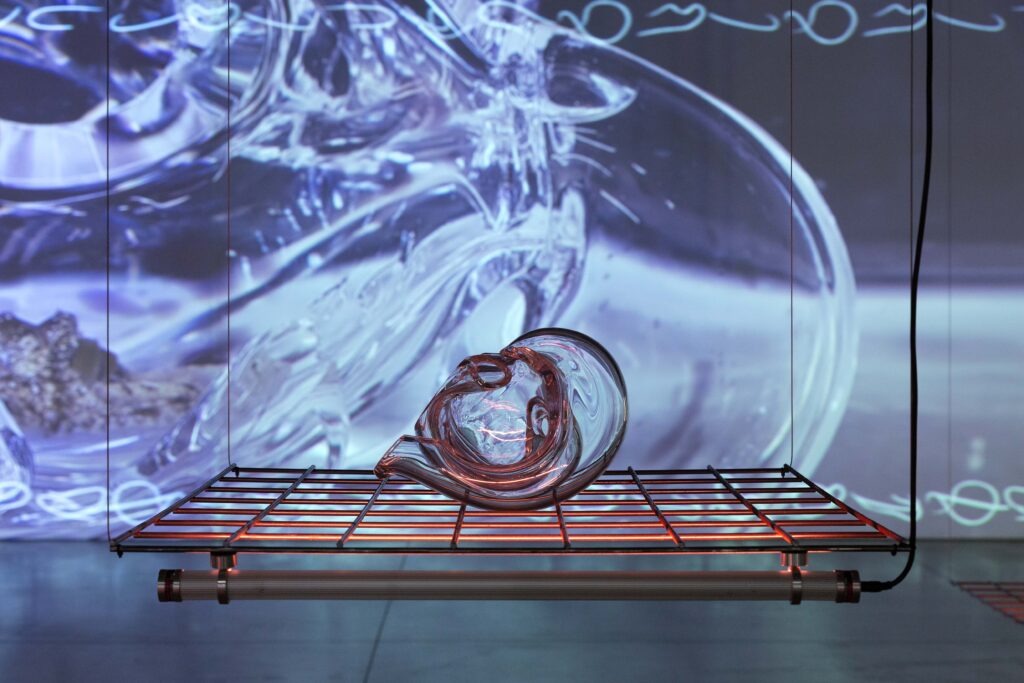
Tuomas A. Laitinen & Kristina Õllek 'Cyanoceans'
Until 4 August
Tuomas A. Laitinen’s work revolves around the exploration of symbiotic processes infused with mythological undertones, grounding itself in the concept of mutualism. Drawing inspiration from various biological theories as well as mythical stories, Laitinen’s work transcends the mere study of biology to inquire about the intricate entanglements of structures and lives within our complex, pulsating ecosystem. On view at Kai will be his complete series of Proposal for Octopus glass sculptures which Laitinen started in 2016, including the newest additions to the series made in 2024. Premiering at Kai will be his new video work filmed at the Okinawa Institute of Science and Technology in December 2023 which highlights the changing skin color of sleeping octopuses. Laitinen’s years-long research into cephalopods’ unique behavior and the remarkable similarities between the nervous system and sleep patterns of octopuses and humans fuels his special interest in species adaptation and neuroplasticity in rapidly changing environmental conditions. With Kristina Õllek, the artists have created a synergetic installation supported by steam, and ultrasonic sound which gives the viewer a sense of being underwater. The focus of Õllek’s work over the last six years has been the exploration of the intricate relationship between marine ecology and technology, using various geographical regions as case studies. For this Kai installation Õllek has concentrated on the Baltic Sea, creating a series of new works using grown seal salt, cyanobacteria, and green fluorescent pigment.
EKKM
Bárbara Sánchez-Kane, Look 3, 2023. Courtesy of the artist and the Kurimanzutto galley

Trigger
Until 2 June
EKKM (the Contemporary Art Museum of Estonia) opened the new season with the international group exhibition Trigger, which is the first joint project by museum curators Evelyn Raudsepp and Maria Helen Känd. The idea of the exhibition was born as a reaction to the current times – to the situation where we are constantly witnessing the tense chaos of political crises – and subsequently from a need for emotional ventilation through metaphorical and poetic means. Trigger includes video works that have a deeply bodily presence, a site-specific sound installation charged with industrial energy, delicate, yet sharp kinetic sculptures, digital-synthetic paintings, and objects that break with the tradition of fashion and jewellery design. Trigger does not seek to offer relief for an already broken psyche in a dizzyingly fatal age, but invites to connect with the raw, intense and transformative. Participating artists: Adrian Kiss, Bárbara Sánchez-Kane, Cevdet Erek, Darja Popolitova, Hanna Antonsson, Jacolby Satterwhite, (LA)HORDE, Mihkel Maripuu and Oona Doherty.
Temnikova & Kasela Gallery
Merike Estna. Prehistoric Origin. 2023
Merike Estna. Peradam
23 May – 18 August
The name of Merike Estna’s exhibition “Peradam” comes from René Daumal's allegorical novel Le Mont Analogue (1952), where it depicts a special crystal stone. In the novel a bunch of adventurers decide to embark on an expedition to a mysterious mountain at the end of the world. For this, one must first obtain the crystal clear gemstone peradam, which can only be found by someone who is truly looking for it. In the exhibition, artist Merike Estna reflects on where human civilization is heading and how our prospects can sometimes seem as hopeless as reaching the mystical mountain in Daumal's novel. References to art history and literature can be recognized in the works exhibited, and the artist has also brought in personal memories and experiences. What is the role of
the art created over the centuries or the love experienced in our lifetime when the future looks bleak? It's a journey into and out of a cave inside a mountain to find what's most important. Merike Estna is a painter who, in addition to the canvas, often includes environments, objects and bodies with her brushstrokes. Similar to the paintings in the "Peradam" exhibition, in other recent works she has also borrowed references from history, literature and myths and connected them with contemporary themes and personal stories. She has become especially close to Mexican culture, where she has been living and working for many years. "Peradam" is a continuation of the exhibition "Analog Mountain", which took place at the Margot Samel Gallery in New York in March 2024. Merike Estna's last exhibitions in Estonia were "The soil does not hold our love" (2022, Kai art center) and "Hasanlu's lovers" with Jaime Alonso Lobato (2021, Temnikova & Kasela gallery).
ESTONIA, Tartu
Estonian National Museum

Surrealism 100. Prague, Tartu and Other Stories...
Until 8 September
This year marks the 100th anniversary of the surrealist movement, which over the century has offered inspiration to many creators and compelling experiences to the general public. 2024 is also the year when Tartu, the capital of surrealism in Estonia, is the European capital of culture. Therefore, it is logical to tie these two important events together and to celebrate them even more grandly.
The Estonian National Museum and Tartu Art Museum invited the National Gallery Prague to collaborate on the exhibition Surrealism 100. Prague, Tartu and Other Stories… at the Estonian National Museum because Prague was the other important centre of surrealism in Europe during the 20th century besides Paris: the artists communicated closely with their Parisian counterparts and a programmatic approach was used for surrealism. The most important authors of the surrealist movement in Prague were Toyen and Jindřich Štyrský for the first generation, Mikuláš Medek, Emila Medková, Josef Istler and Václav Tikal for the second one, and Jan Švankmajer and Eva Švankmajerová for the third one. Surrealism 100. Prague, Tartu and Other Stories … is an exhibition in which Czech and Estonian surrealism will start a dialogue. The two sides seem very different, but the two countries do share the complicated fate that during the 20th century they were in the sphere of influence of the Soviet Union.
LATVIA, Riga
Latvian National Museum of Art
Vika Eksta. P. From the photo series. 2019. Inkjet archival print. Courtesy of the author. Publicity photo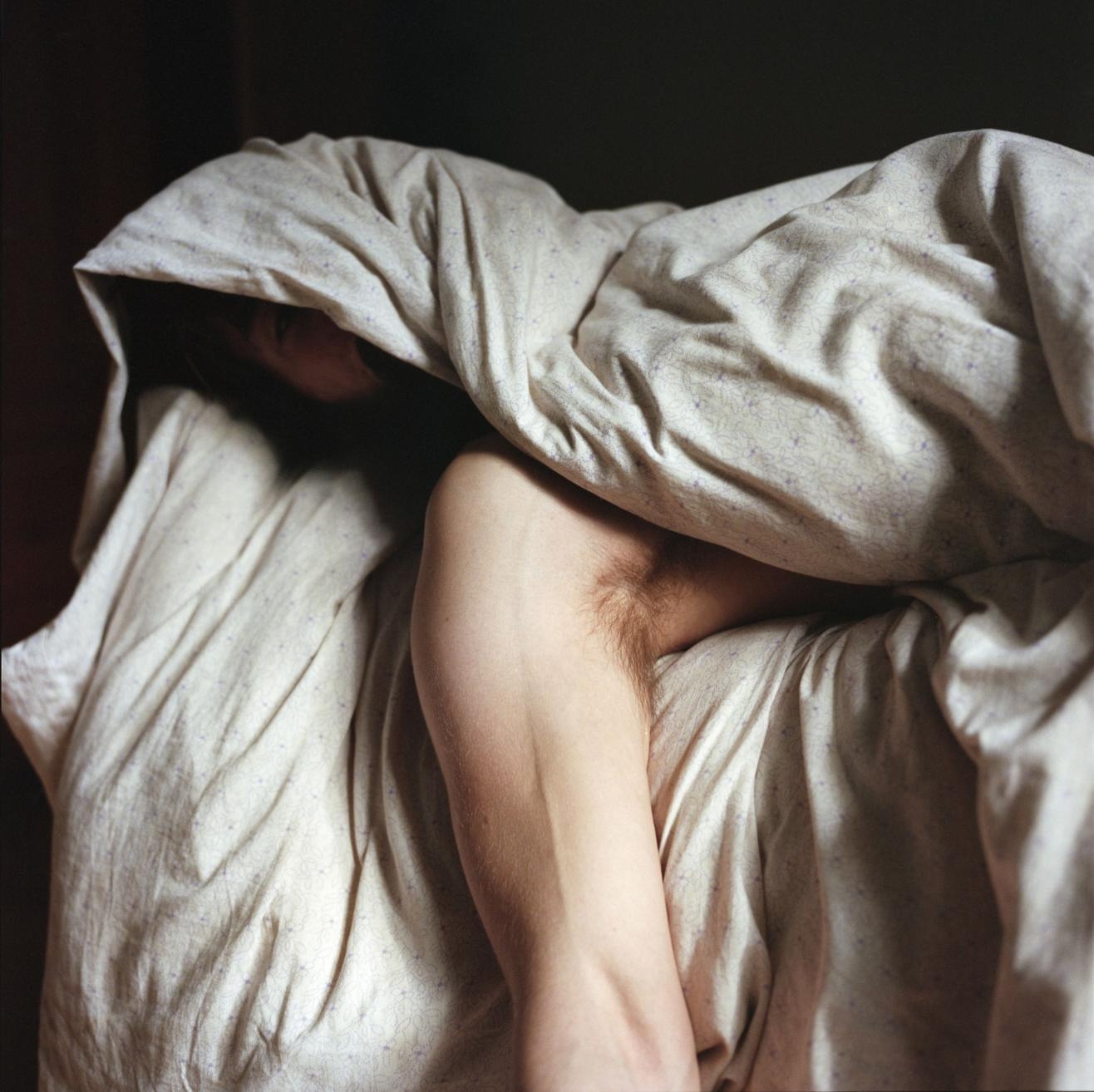
In the Name of Desire
27 April – 28 July 2024
The exhibition sheds light on authors in Latvian 20th century art history who have bravely taken up the investigation of sexuality and the phenomenon of desire. Furthermore, contemporary artists participate in this project with existing or specially created works, interpreting this socially still awkward subject in the media of painting, graphic art, photography, sculpture, installation, and video art. The exhibition critically revisits the objectification of women’s bodies in visual art, shifting the focus to the representation of the female experience and a feminist approach. For the first time in Latvia, Baltic queer art is surveyed at such breadth, demonstrating inclusive thinking and openness towards questions of self-identity regarding awareness of one’s sexuality.
“The exhibition will celebrate sexual diversity at a time when authoritarian regimes right next to us as well as in other parts of the world violently oppress and persecute people who identify and desire differently. Continuing the institutional critique began in the exhibition Don’t Cry!, curated by Elita Ansone, In the Name of Desire will for the first time in the history of the Latvian National Museum of Art present a representative selection of Latvian LGBT+ art. With the help of this project we want to encourage discussion about taboo yet existentially important subjects and to promote the acceptance of diversity among Latvian society. Since where there is no space for diversity, there is no space for freedom,” stresses one of the curators of the exhibition, philosopher Igor Gubenko.

Katrīna Neiburga. Sologamy
8 June – 28 July 2024
Sologamy. From an etymological perspective, this term can be explained very literally – marriage (ancient Greek γάμος (gámos)) with oneself (solus), which conceptually can be linked with self-acceptance, yet does not correspond to any religious or legal categories. Among sologamy's basic set of principles it is possible to perceive manifestations of a feminist perspective, buds of narcissism as well as rituals asserting one's own identity. At the same time, the value of sologamy is openness, respect and the ability to conduct an adequate dialogue with one's own essence and desires.
In her personal exhibition devoted to the investigation of sologamy and interpretations of this term, artist Katrīna Neiburga will reflect with her characteristic openness and unpacking of her personal world. In several video episodes the artist will focus on close-up observation of herself in different everyday situations – in an emotional conversation or passionate argument with herself; a dance with domestic objects to her favourite song; expressions of love and sexuality, accepting herself here and now. Through emotional saturation, yet at the same time keeping a slightly satirical perspective, the exhibition will offer a look at the understanding of the concept of sologamy. Are we searching for justifications for self-respect? And if we are, then – why? Katrīna Neiburga's intimate art will not be an answer to questions posed by others, but a resonant encouragement to gather the will to cross the awkward boundary and finally establish a lively relationship to our own selves.
Riga Art Space
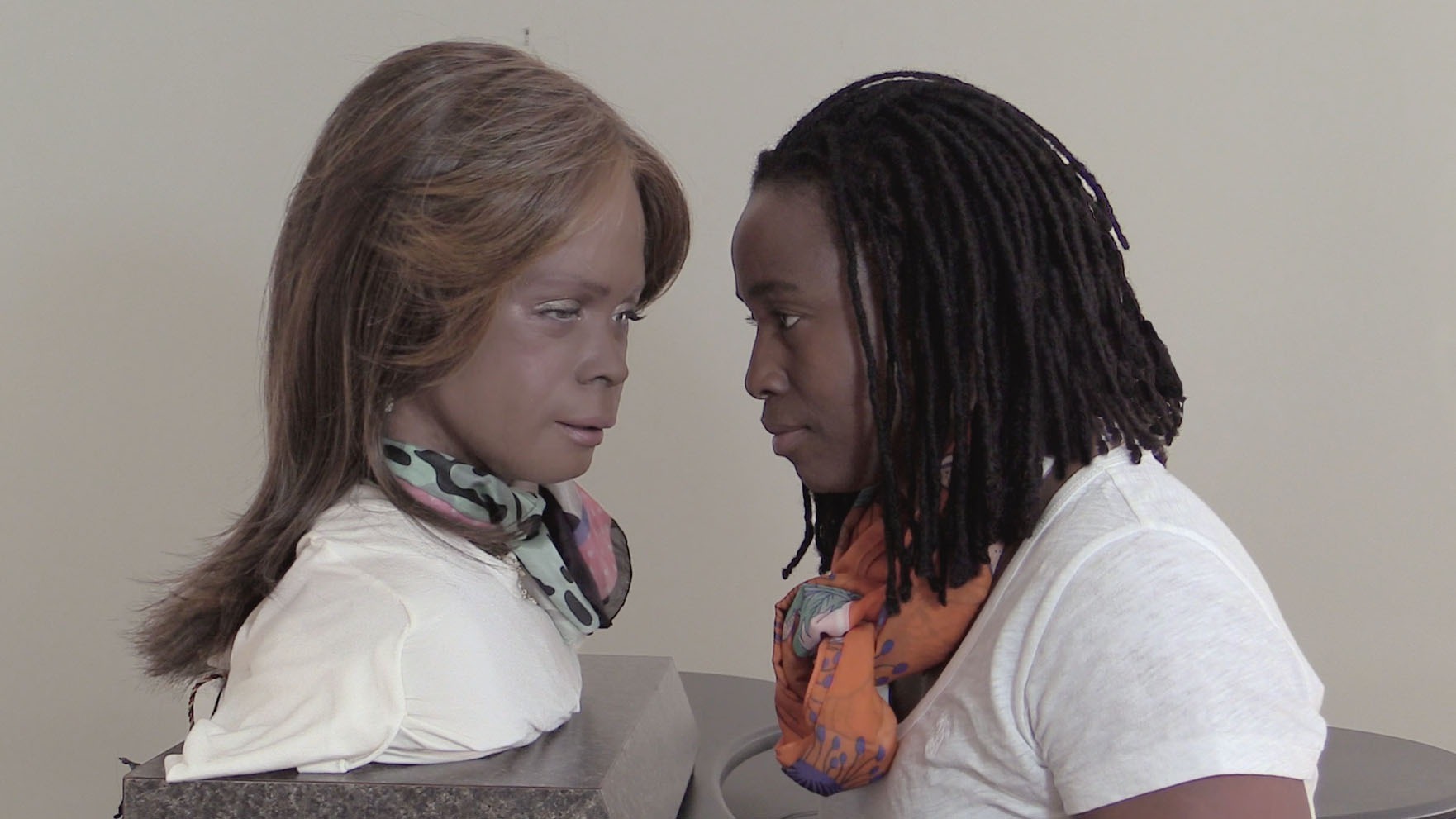
Riga Photography Biennial 2024 Central Event – Exhibition ‘Human Computer’
19 April – 16 June
The exhibition Human Computer is devoted to the group of eternal existential questions whose answers have to be re-evaluated from time to time. At its centre is the naive question: “Who am I?”, followed by a flood of similar attempts at self-understanding: “Who are we? Where do we come from and where are we going? Why is this happening? Why do we act like this? What do I feel? How do you feel?”
We live in hurried, interesting times, which constantly surprise and entice us with new technological means of improving the quality of our lives. We quickly adapt them to our daily rituals until we realise that these technical assistants are already pretending to become part of our personalities (thus, without a smartphone the individual is left helpless). Hence the era requires a new understanding of the essence of being human, a redefinition of the very idea of the human, a change in the existing perceptions of the self and the borders of one's personality. We are by now very close to the state predicted by Donna Haraway's A Cyborg Manifesto, published in 1985, predicting an era in which “people are not afraid of their joint kinship with animals and machines”.
Human Computer, the central exhibition of the fifth biennial, likewise reflects on subjects that touch on several aspects of identity – body, gender, and social and historical identity. From different perspectives, the artists have turned to the following question: how do the emotional manifestations inherent in human nature – feelings, pain, compassion – adapt to today's digital world?
Kim? Contemporary Art Centre
Miķelis Mūrnieks. Fountain. 2023. Photo: Ričards Briška
Miķelis Mūrnieks. Behavioral Sink
Until 19 May
Since the start of the century, our attention has been directed to the need to be more fluid — it is preached that in times of dynamic change, it will become a valuable tool for managing everyday life. With the capitalist work rhythm dictating the tempo of everyday life, a hypnotic state can be reached that is as though gazing at the ceaseless flow of water. The sculpting of this formless substance is the primary material common denominator for the works created for the exhibition. Drawn in a whirlpool of the mass of various rules, consumer illusions, and systems, the viewer is invited to explore the environment in which the artist untangles deeply personal yet, at the same time, socially descriptive experiences that are hidden behind a dreamy yet fragile shroud.
The threads of contradiction and incomprehension are reflected not only in the world of ideas but also in the manifestly visible — surprising variety of states of water. Fictional events and uncomfortable truths will serve as an invitation to catch the waves of self- and other reflections. In the socially critical spirit characteristic of Mūrnieks’ work, this series will also investigate and reconsider the shortcuts of perception automated by consciousness.
Zuzeum Art Centre
Nastaran Shahbazi. Party time. 2023. Oil on linen. 73 x 91.5 cm
Straight, No Chaser*
7 June – 28 August
Straight, No Chaser* – summer season exhibition in the Great Exhibition Hall of the Zuzeum Art Centre. Artistic directors are the Paris based exhibition-oriented research group La Méditerranée, cofounded in 2020 by artists Mateo Revillo, Edgar Sarin, and art historian Ulysse Geissler. To describe the method of La Méditerranée, one could put forth an analogy of the musical practice of Jazz. The almost tactical use of improvisation is what brings together the members of the research group – humanism, perspective, jazz – and constitutes the engine of the enterprise.
Exhibition scenography is rooted in the history of the Riga city but also echoes the singular nature of the expansive Zuzāns Collection. In addition to site-specific pieces by La Méditerranée, they will bring forward a selection of international artists to dialogue with the museum’s collection. Through the fresh perspective and unique approach La Méditerranée creates new dialogue between the diverse artworks and the audience. The singular parts of history, bits of geography, and patchworks of individual paths that inform the unique form of each work are the different pulses that mark the rhythm of viewership.
* The title of the exhibition, Straight, No Chaser, is the title of a piece by the famous American Jazz musician Thelonious Monk released in 1967.
Orbita. 2 sonnets from Laputa. Installation in Venice, Arsenale, 2016
Orbita. Grotto Far From the Sea
7 June – 28 August
Exhibition Grotto Far From the Sea brings together several works from different periods by the collective Orbita – or, more precisely, new versions of previously realised ideas and objects created specially for this exhibition. Grotto Far From the Sea is an invitation to a meditative walk, to drift between flickering revelations and tune in to a receding yet perceptible wave. In the selected installations, ordinary everyday items are used to perform a function not typical to them – the transmission of a poetic message. The exhibition also involves such actants as sunlight and airflow.
Orbita is a collective of poets and multimedia artists from Latvia. Its members are Semjons Haņins, Artūrs Punte, Vladimirs Svetlovs and Sergejs Timofejevs. The project was established in 1999. In its work, Orbita depends on the synthesis and interaction of text, sound and image. Although the presence of text is not a necessary condition, often the authors' own poetic texts serve as the impulse for the creation of the works.The exhibition Grotto Far From the Sea takes place during the 25th anniversary year of Orbita's existance.
ISSP Gallery
Kristīne Krauze Slucka, Agate Tūna
Kristīne Krauze Slucka, Agate Tūna. Contemporary Histories of Photography I
17 May – 27June
Contemporary Histories of Photography I launches a two-part exhibition series at the ISSP Gallery, bringing together several artists' perspectives and interpretations on the process of writing a local history of photography. How to simultaneously fill a vacuum of in-depth historiography while critically re-examining existing narratives? The new works engage in dialogue with photographers and phenomena spanning various time periods. Kristīne Krauze Slucka worked with the archive of Ina Stūre (1958-2006), a photographer active at the turn of the 1980s and 1990s, but largely overlooked today. Krauze Slucka's work questions the "disappearance" of women from historical narratives and highlights Stūre's expressive, staged images against the backdrop of the modest living conditions and mundane domesticity of the turbulent time period. Both artists share an experimental approach, emphasizing the materiality of the image. Meanwhile, Agate Tūna, driven by personal and artistic interests, traces the threads of paranormal and illusionist photography in Latvia, pushing the conventional boundaries of the photographic medium and its relationship with reality. The act of writing history, including art history, is never neutral, but is woven into a social and political context, shaped by both power dynamics and personal choices. The series of exhibitions highlights the subjectivity inherent in each version of history and sheds light on various lesser-known aspects of local photography. The exhibition is part of the Riga Photography Biennial 2024 programme.
Maksla XO gallery
Alexei Gordin
Alexei Gordin. Death Mill
16 May - 8 June
The title of the exhibition comes from a rare natural phenomenon called "Ant Mill", in which a group of ants separates from the main forager, loses the pheromone trail and starts following each other, forming a constantly rotating circle. Thousands of ants go in rounds like this until they die or the one comes back to his senses and breaks the circle.
The exhibition consists mostly from new paintings completed between 2023-2024. Through them, the author analyzes the processes happening in the world and their impact on the artist and his practice. The paintings have both historical and geopolitical levels as well as very personal memories and experiences. The grotesqueness of the works moves from privacy to globality, where the starting point is the authors introspection, leading towards wider processes taking place between social media, news and mass culture. In most cases, the references for the paintings are photos found through friends on social media, as well as pictures from personal archives, which have been given a new meaning with short catchy phrases. Alexei Gordin (born in 1989) studied painting in Tallinn and Helsinki and currently lives and works in Tallinn. Although he has a background as a painter, Gordin fluently uses different media and works with drawing, photography, video, and performance. The main subject matter of his artistic practice is absurdly stereotypical thinking and behaviour patterns of people in contemporary mass society.
LITHUANIA, Vilnius
MO Museum

Down the Rabbit Hole
Until 3 November
The exhibition Down the Rabbit Hole delves into the phenomena of paganism, spirituality and conspiracy through diverse artworks by Baltic artists. The show suggests to look at paganism and spirituality as a romanticized historical refuge, pointing to its transformation during the recent years, as it increasingly takes on conspiratorial elements dressed in corporate language. Coined by sociologists Charlotte Ward and David Voas over a decade ago, the term ‘conspirituality’ refers to a movement fueled by political disillusionment and a growing interest in alternative beliefs. It revolves around two main ideas: the belief in a hidden group controlling society, and a supposed shift in human consciousness, often called a ‘paradigm shift.’ Both conspiracy theories and esoteric beliefs focus on uncovering hidden truths and pursuing secret knowledge.
During recent years, neo-paganism has been on the rise, blending into mainstream culture while also intertwining with conspiratorial beliefs. Within the exhibition, the artworks that form an interplay between conspirituality, selfhood, and the phenomenon of paganism are showcased both in a critical and celebratory way. The exhibition Down the Rabbit Hole aims to demonstrate the intergenerational connection between artistic practices and how traumatic experiences within the socio-political landscape have been expressed in the light of conspirituality. Artists: Līga Spunde (1990), Anastasia Sosunova (1993), Viktorija Daniliauskaitė (1951), Darja Popolitova (1989), Aistė Ramūnaitė (1957), Vita Zaman (1976), Katrīna Neiburga (1978), Laura Põld (1984), Nijolė Valadkevičiūtė (1944–2020), Gertrūda Gilytė (1992).
National Gallery of Art
Algimantas Jonas Kuras, Girl, 1972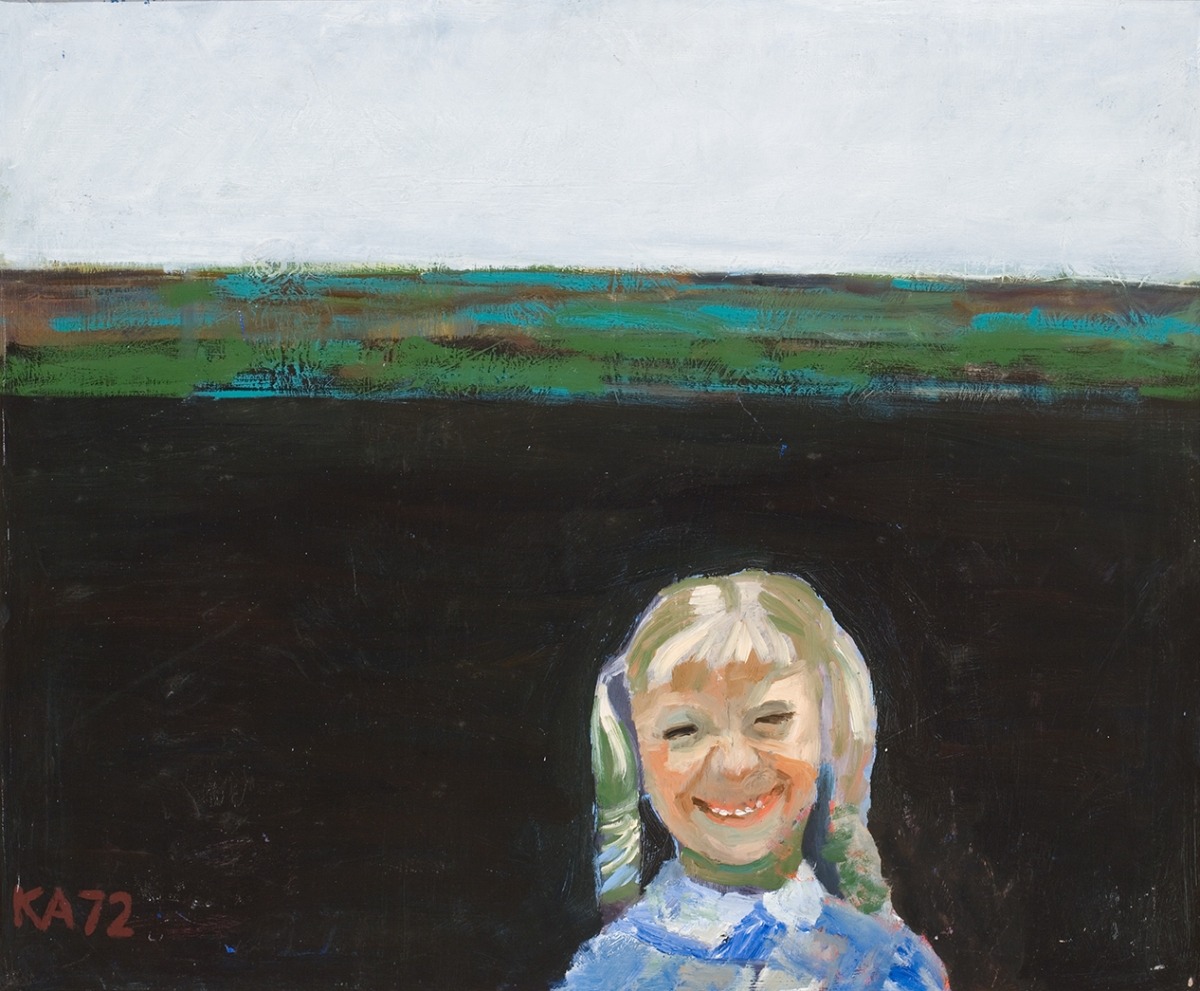
Algimantas Jonas Kuras. Hymn to a Broken Smile
Until 16 June
The rusted scraps of mechanisms peaking in the grass, strange, almost unrecognisable industrial objects eroded by the flow of time and jarringly reminding of the ugly side of civilization’s progress. These are the painting motifs that artist Algimantas Jonas Kuras (b. 1940) has been consistently studying throughout his creative career, which spans over 60 years. This exhibition is akin to a poetic retrospective, presenting the works of the famous painter, the winner of the Lithuanian National Prize for Culture and Arts, and highlighting its relevance in the context of today’s flourishing ecological, quasi-religious ideologies.
The issues of human impact on nature, pollution, exploitation of natural resources, recycling, animal body preparation, and human-object-mechanism are often explored in the contemporary fields of arts, nature and social ideas. The eco-catastrophic mood permeates our daily lives and our future. Looking at Kuras’ painting, one could falsely assume seeing only ecological themes in it. However, the author’s goals were to oppose the prevailing ideological background and the propaganda of the optimistic Soviet reality. This is the first exhibition of such a scale presenting a broad panorama and chronology of the artist’s oeuvre, consisting of works stored in the Lithuanian museum funds, private collections and works owned by the author.

Andrej Polukord. Unknown Mushrooms
Until 9 June
The values of the Anthropocene Epoch pierce into the human conscience and point a finger at the still-living brute instinct. The long-flourishing subjugation of natural resources for excessive consumption, human dominance over living nature and control of the latter are being replaced today by new narratives about human responsibility and the planet’s future. The exhibition Unknown Mushrooms by the interdisciplinary art creator Andrej Polukord, who represents the young generation, invites to immerse oneself in a dystopian tale full of paradoxes and jests, which takes the spectator to a forest where mushrooms grow.
Mushrooms have a distinct status in the folklore and mythology of various countries. They are associated with the forest spirits and fertility. Mushrooms are also linked to the chthonic mythical being – the devil – and the spheres of death and money attributed to it. Often, mushrooms are depicted as living, even human beings, appearing only to the chosen ones who are blessed with mushroom luck or success. Polukord’s installations, performances, and video art projects seem comical and absurd at first glance, but their purpose is to break the established thought patterns, to show the paradoxes hidden within.
The Museum of Applied Arts and Design

Chagall. Picasso. Ernst. Ceramics and Tapestry
Until 30 September
Marc Chagall, Pablo Picasso, Max Ernst – they are among the most prominent artists to have formed the evolution of 20th-century art. Most viewers are familiar with their paintings and graphic art, somewhat less – with the ceramic artworks that sometimes appear in their exhibitions to add variety, but the tapestries woven based on their art have had hardly any exposure.
For the first time not only in Lithuania, but also in neighboring countries, the Museum of Applied Arts and Design presents 23 ceramics items by Chagall and Picasso – plaquettes, plates, vases, jugs as well as 12 tapestries woven by master Yvette Cauquil-Prince based on sketches by Chagall, Picasso and Ernst. These art works span six themes: the Bible, war and peace, the native shtetl, love, the circus and the traditional corrida, or bullfighting. The artists speak of fundamental ethical and moral values, the search for harmony with nature and share their nostalgic approach to childhood.
Kazys Varnelis House-Museum
Installation view. Photo: Augustinas Bėkšta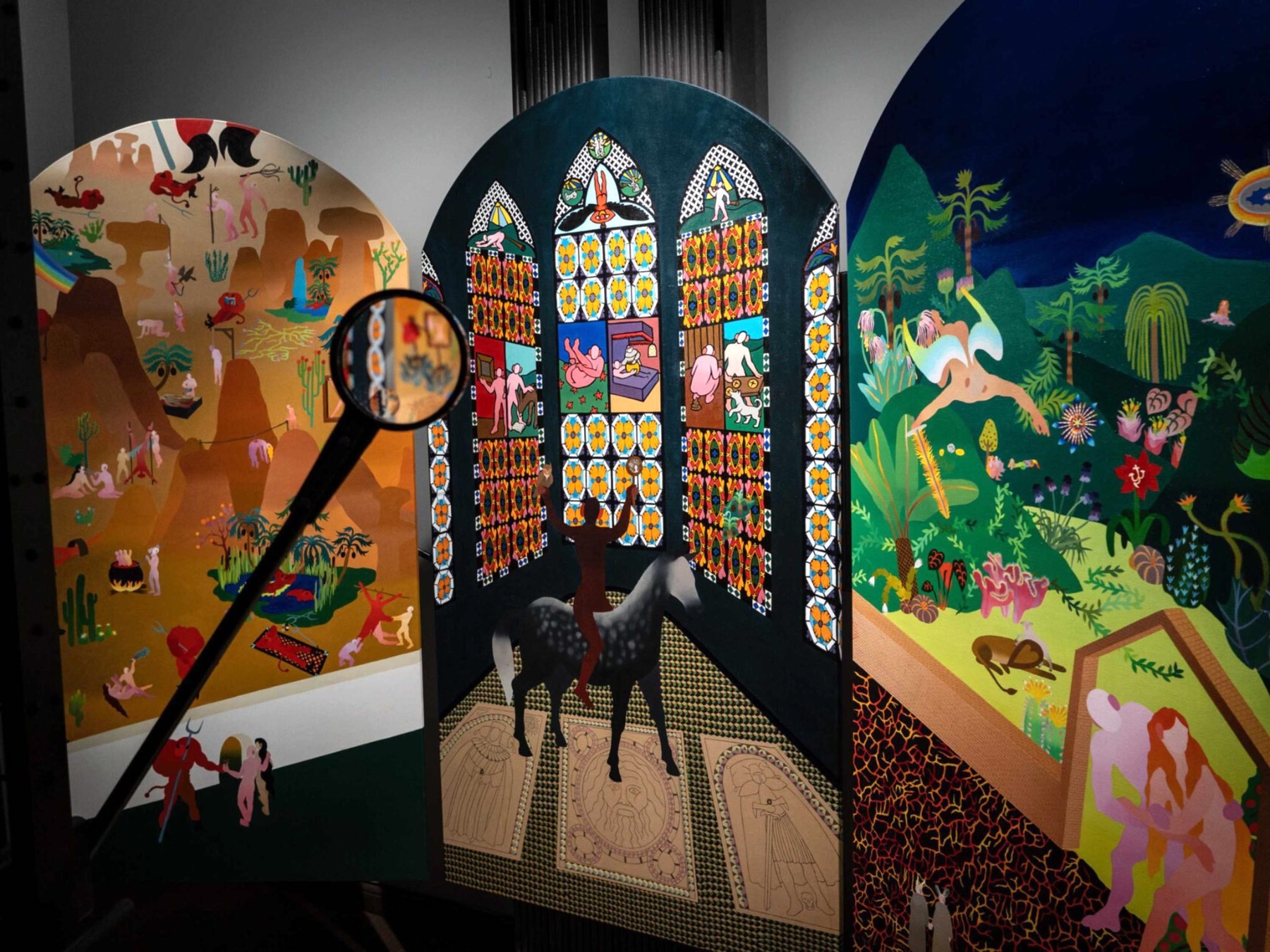
Monika Radžiūnaitė. And I’m Only Human
Until 2 October
Monika Radžiūnaitė (born in 1992) is a representative of the young painters’ generation of Vilnius. The artist’s characteristics are irony, the transformation of historical and cultural plots, which is not appealing to the actual, chronological, or thematic reality of past times, but playing with the new links between symbols, allusions, and images.
The starting point of her creation was the exposition at Kazys Varnelis House-Museum – an installation based on aesthetic and meaningful constellations of different epochs, a space of timeless museum sacralism that stretches beyond the boundaries of everyday life. Varnelis’ conception of space was greatly influenced by many years of practice in the field of ecclesiastical art, but there are no direct references to sacred art in the museum.
The concept of the exhibition is based on the creative error strategy developed by M. Radžiūnaitė. “Erroneous” reading is revealed in the artist’s recreated iconography, in the titles of paintings translated into Latin by using a Google translator, in glitch-gothic exhibition architecture. The viewer is provoked to critically reflect on the interaction between text and image, on the error, which is unavoidable even in the technological era, and on the excessively serious approach to the heritage of the past.
Vartai gallery
Donata Minderytė, New Birds, 2023
Donata Minderytė. Visual Translation / Jum Cut
Until 17 May
In her solo exhibition Visual Translation / Jum Cut, Donata Minderytė presents paintings based on her doctoral research, which deals both practically and theoretically with "untranslatable" images and explores what happens when they are translated into contemporary painting. The cinematic term Jump Cut suggests a certain gap between theory and practise and refers to the cinematic references in the paintings, which in some places appear as direct quotations and in others as almost intangible composition or colour signals. Jump Cut refers to the "rift of untranslatability" that appears in the paintings, like a leap in time that skips the narrative, moving away from the intellectual content and towards the parameters that painting itself offers, the limits of expression and yet openness to interpretation.
In the exhibition, the painter Donata Minderytė tests the potential of image translation, when images are wordlessly translated into other images, reverting them to their pre-verbal state and prompting an unlearning of all familiar stories, meanings, and connotations. Such translation can be seen as a jump – into another form of image, environment, and scale. The ‘native’ language of cinema, photographs, or personal videos is transformed into a distinctive proto-language of painting, where mundane, seemingly ordinary, or stop-motion shots speak an entirely different alphabet. Thus, the images before you – swaddled in canvases – are like children – ones yet (or already) incapable of speech. They are bizarre creations born from the tension and love between pixels and film, smooth brushstrokes and digital screens.
Title image: Donata Minderytė. Kamile as Alice Wakefield. 2023

